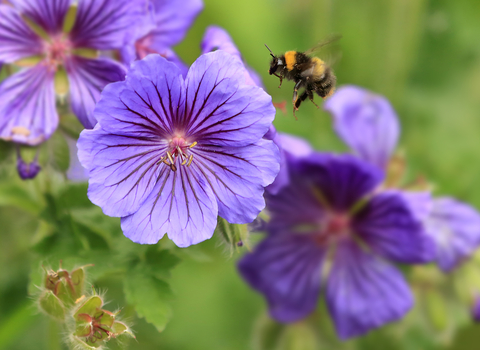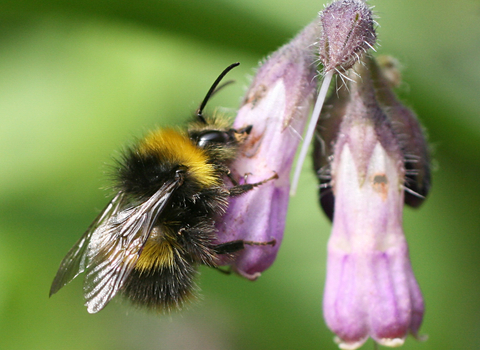
Early Bumblebee ©Jon Hawkins/Surrey Hills Photography

Early Bumblebee ©Penny Frith
Early bumblebee
One of our prettiest and smallest bumble bees, the early bumblebee has a bright orange tail and lemon-yellow bands on its body. It is very common and can be found in all kinds of habitats in early spring.
Scientific name
Bombus pratorumWhen to see
March to JuneSpecies information
About
The early bumblebee is one of our most common bumble bee species and is found throughout the UK in all kinds of habitats. It is a small bee and an important pollinator of soft fruit, such as raspberries and blackberries. It visits long, tubular flowers and open flowers, and the queens are commonly seen on Rhododendrons. Early bumblebees nest underground in colonies of fewer than 100 workers, often using the old nests of small mammals. They may also nest in in old birds' nests, tree holes or bird boxes. As the common name suggests, the queens emerge from hibernation early in the year, between March and May, depending on latitude. In the south, they may even have a second generation later in the year.How to identify
The early bumblebee is relatively small, with distinctive lemon-yellow bands on its thorax and abdomen, and an orange tail.Distribution
Widespread.In our area
How to attract bumblebees to your garden
Bees are important pollinating insects, but they are under threat. You can help them by planting bumblebee-friendly flowers. Read more...
Did you know?
The early bumblebee is not picky about the flowers it likes to get nectar from and is known to visit more than 140 different species!How to attract bumblebees to your garden
Bees are important pollinating insects, but they are under threat. You can help them by planting bumblebee-friendly flowers. Read more...

